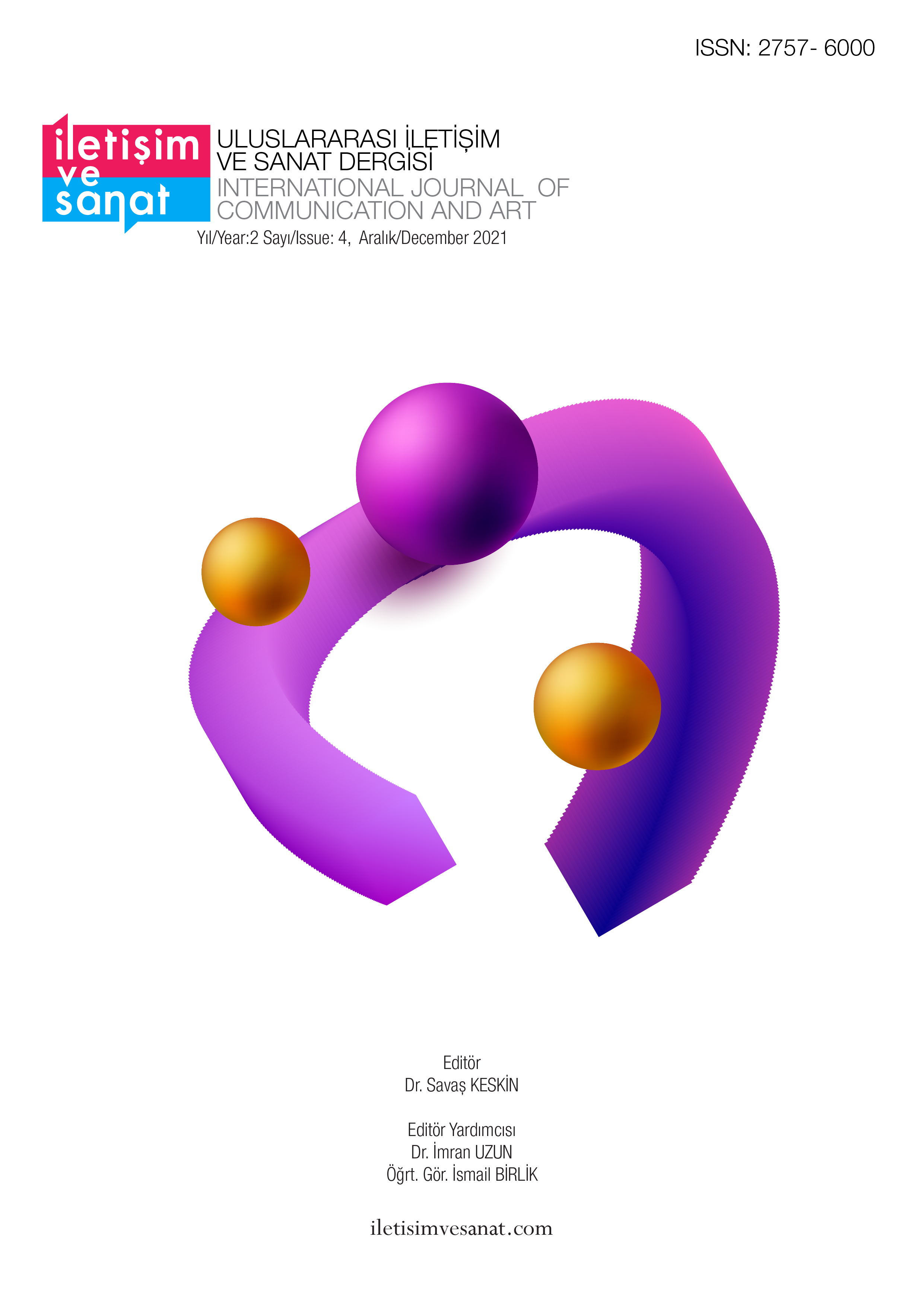GÖRSEL GÖSTERGEBİLİM VE FEYHAMAN DURAN VE EROL AKYAVAŞ’IN ESERLERİNDEN KESİTLEMEYE DAİR BİR ANALİZ DENEMESİ
Author :
Abstract
ÖZET
Göstergebilim çeşitli işitsel, görsel, devimsel dizgilere; resim, sinema, fotoğraf gibi çeşitli sanat etkinliklerine, toplumsal ilişkileri düzenleyen kurallara, davranış biçimlerine değin uzanan geniş bir alanı kapsar. Anlam aktaran ya da içeren tüm oluşumlarda kendini var eder. Göstergebilim incelediği alanın kendine özgü yasalarını belirlemeyi, işleyiş kurallarını saptamayı, inceleme yöntemlerini oluşturmayı, betimleme ve açıklama işlemlerini gerçekleştirmeyi hedefler.
Gösterenler düzlemi anlatım düzlemini, gösterilenler düzlemiyse içerik düzlemini oluşturur. Gösteren öge maddi ve duyusaldır. Sözcük, boya, taş olabilen bu öge duyusal gerçekliği verir. Esas gerçeklikse anlam varlığını oluşturmasını sağlayan gösterilendir. Göstergenin iki bağlantısal ögesinden biri olan gösterilen, göstergeyi kullananın bundan anladığı şeydir. Onu gösterenin karşıtı yapan şey, gösterenin bir aracı niteliği taşımasıdır.
Görsel göstergebilim denilen şey, doğadaki nesnelerin yeniden sunumu ve toplumca kabul edilmiş değerlerdir.Yeniden sunmak algılanabilir hale getirmek ve var etmek demektir. Sanatsal yapıtların önemli konusu “sanatçı doğayı nasıl görüyor ve tuvaline yeniden sunumu nasıl gerçekleştiriyor?” sorunun yanıtı olabilir. Bu bağlamda Feyhaman DURAN’ın iki eseri ve Erol AKYAVAŞ’ın bir eseri ele alınarak incelenmiştir.
Keywords
Abstract
ABSTRACT
Semiotics includes various auditory, visual, dynamic strings; It covers a wide range of art activities such as painting, cinema, photography, rules that regulate social relations, and behavioral patterns. It comes into existence in all formations that convey or contain meaning. Semiotics aims to determine the specific laws of the field it examines, to determine the rules of operation, to form the examination methods, to describe and explain.
The signifiers make up the narrative plane, the illustrated plane the content plane. The signifying element is material and sensory. This element, which can be word, paint, stone, gives sensual reality. The real reality is that which constitutes the being of meaning. The sign, one of the two connective elements of the indicator, is what the user of the indicator understands from it. What makes it the opposite of the signifier is that the signifier is an intermediary.
What is called visual semiotics is the re-presentation of objects in nature and socially accepted values. Re-presenting means making it perceptible and creating. The important subject of artistic works is "how does the artist see nature and how does he perform the re-presentation on his canvas?" may be the answer to the question. In this context, two works of Feyhaman DURAN and one work of Erol AKYAVAŞ were examined and examined.
GİRİŞ
Keywords
- Bayav, D. (2006). Resimde göstergebilim, çocuk resimlerinin göstergebilimsel çözümlenmesi (ilköğretim 8.sınıf). Yayınlanmamış Doktora Tezi. İstanbul: Marmara Üniversitesi, Eğitim Bilimleri Enstitüsü.
- Guiraud, P. (1994). Gösterge bilim. (Çev: Mehmet Yalçın). Ankara: İmge Yayınları.
- Günay, V. D. ve Parsa, A. F. (2013). Görsel göstergebilim imgenin anlamlandırılması. İstanbul: Es Yayıncılık.
- İnceoğlu, Y. G. ve Çomak, N. A. (2009). Metin çözümlemeleri. İstanbul: Ayrıntı Yayınları.
- Rifat, M. (1993). Homo semioticu. İstanbul: Yapı Kredi Yayınları.
- Rifat, M. (1996). Göstergebilimcinin Kitabı. İstanbul: Düzlem Yayınları.
- Rifat, M. (1999). Gösterge eleştirisi. İstanbul: Kaf Yayıncılık,
- Rifat, M. (2009). Göstergebilimin ABC’si. İstanbul: Say Yayınları.
- Saussure F. (1985). Genel dilbilim dersleri. (Çev. Berke Vardar). Ankara: Birey ve Toplum.
- Şenesen, R. O. (2011). Türk halk kültüründe bolluk ve bereketle ilgili inanç ve uygulamalarda eski türk kültürü izleri. Ciu Cyprus Universiti, folklor/edebiyat, 17 (66).





